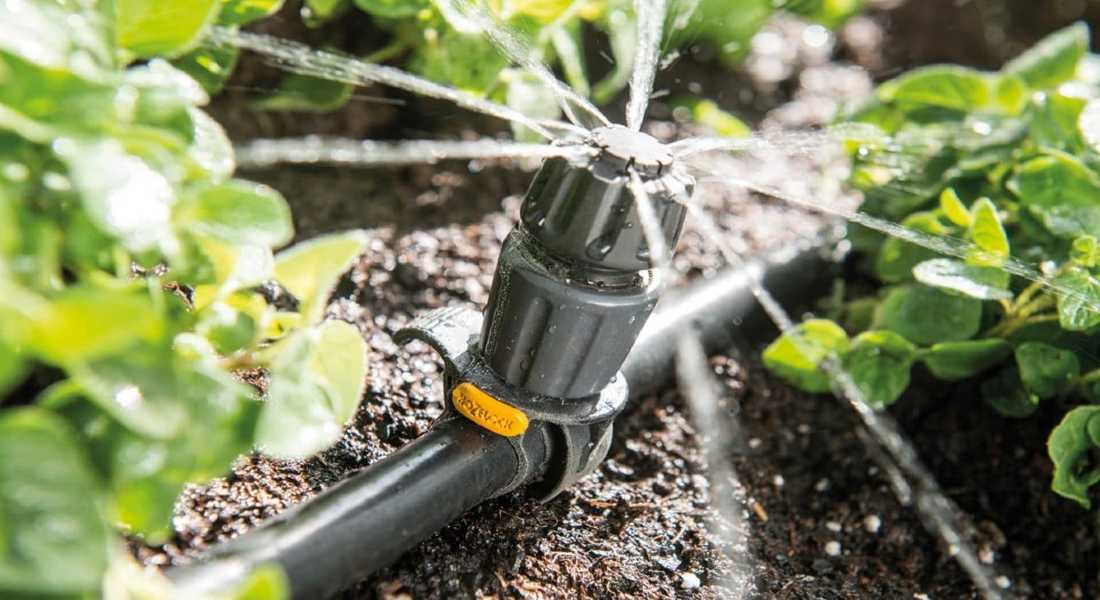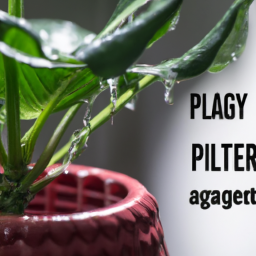How to Water Garden Plants Efficiently: A Comprehensive Guide

Imagine your garden as a bustling city, where each plant is a citizen thriving on the life-giving resource of water. Just as a well-managed city ensures efficient water distribution, your garden needs a smart watering strategy to keep your plants hydrated and healthy. Efficient gardening isn't just about having a green thumb; it's about understanding the art of plant hydration. So, let's dive into the world of garden irrigation and explore tips on watering garden plants efficiently.
Understanding Plant Watering Techniques
Before we delve into the specifics, it's crucial to grasp the basics of plant watering techniques. Watering isn't a one-size-fits-all task. Different plants have different needs, and understanding these needs is the first step towards efficient gardening.
The Science Behind Plant Hydration
Plants absorb water through their roots, which then travels up to the leaves through a process called transpiration. This water is essential for photosynthesis, the process by which plants convert sunlight into energy. Without adequate water, plants can't perform these vital functions, leading to wilting and eventual death.
Factors Affecting Water Needs
Several factors influence how much water your plants need. These include:
- Plant Type: Some plants, like succulents, require less water, while others, like tropical plants, need more.
- Soil Type: Sandy soil drains quickly, requiring more frequent watering, while clay soil retains water longer.
- Weather Conditions: Hot, dry weather increases water needs, while cool, wet weather reduces them.
- Plant Size: Larger plants generally need more water than smaller ones.
Tips on Watering Garden Plants Efficiently
Now that we understand the basics, let's explore some practical tips for efficient garden irrigation.
1. Water Deeply and Infrequently
One of the most common mistakes in gardening is watering too frequently but not deeply enough. This encourages shallow root growth, making plants more susceptible to drought. Instead, water deeply and less frequently to promote deep root growth and stronger plants.
2. Water in the Morning
The best time to water your garden is in the early morning. This allows the water to seep into the soil before the sun's heat causes it to evaporate. Evening watering can leave plants damp overnight, increasing the risk of fungal diseases.
3. Use Drip Irrigation Systems
Drip irrigation systems deliver water directly to the roots of your plants, reducing water waste and promoting efficient plant hydration. These systems are especially useful in dry climates or during drought conditions.
4. Mulch Your Garden
Mulching is a fantastic way to conserve water. A layer of organic mulch around your plants can reduce evaporation, maintain soil moisture, and suppress weeds that compete for water.
5. Collect Rainwater
Rainwater is a free and eco-friendly source of water for your garden. Collecting rainwater in barrels or other containers can help reduce your water bill and promote water conservation.
6. Group Plants by Water Needs
Planting your garden with water needs in mind can make irrigation more efficient. Group plants with similar water requirements together to avoid overwatering or underwatering.
7. Check Soil Moisture Before Watering
Before you water, check the soil moisture. Stick your finger about an inch into the soil. If it feels dry, it's time to water. If it's still moist, wait a bit longer. This simple test can help prevent overwatering.
Advanced Techniques for Efficient Gardening
For those looking to take their gardening skills to the next level, here are some advanced techniques for efficient garden irrigation.
Automated Irrigation Systems
Automated irrigation systems can take the guesswork out of watering. These systems can be programmed to water your garden at specific times and intervals, ensuring consistent plant hydration. Some even come with sensors that adjust watering based on soil moisture and weather conditions.
Hydrozoning
Hydrozoning is the practice of grouping plants based on their water needs. This technique can help you tailor your watering strategy to different areas of your garden, ensuring that each plant gets the right amount of water.
Xeriscaping
Xeriscaping is a landscaping method that focuses on water conservation. It involves choosing drought-resistant plants, improving soil quality, and using efficient irrigation methods. This technique is particularly useful in dry climates.
The Importance of Water Conservation
Efficient gardening isn't just about keeping your plants healthy; it's also about conserving water. Water is a precious resource, and every drop counts. By adopting water-efficient gardening practices, you can help protect the environment and save money on your water bill.

Common Mistakes to Avoid
Even the most experienced gardeners can make mistakes. Here are some common pitfalls to avoid when watering your garden.
Overwatering
Overwatering can be just as harmful as underwatering. Too much water can drown your plants' roots, leading to root rot and other diseases. Always check soil moisture before watering to avoid this issue.
Watering Too Frequently
Frequent, shallow watering encourages shallow root growth, making plants more susceptible to drought. Water deeply and less frequently to promote strong, deep roots.
Watering at the Wrong Time
Watering in the heat of the day can cause water to evaporate before it reaches your plants' roots. Watering in the evening can leave plants damp overnight, increasing the risk of fungal diseases. The best time to water is in the early morning.
Conclusion: Growing a Thriving Garden
Efficient garden irrigation is a crucial aspect of growing a thriving garden. By understanding plant watering techniques and adopting efficient gardening practices, you can keep your plants healthy and conserve water. Remember, every garden is unique, and what works for one may not work for another. The key is to observe your plants, understand their needs, and adjust your watering strategy accordingly.
So, are you ready to transform your garden into a thriving oasis? With these tips on watering garden plants efficiently, you're well on your way. Happy gardening!

FAQs
How often should I water my garden? The frequency of watering depends on several factors, including plant type, soil type, weather conditions, and plant size. As a general rule, water deeply and less frequently to promote deep root growth.
What is the best time of day to water my garden? The best time to water your garden is in the early morning. This allows the water to seep into the soil before the sun's heat causes it to evaporate.
How can I tell if my plants are getting enough water? Signs of underwatering include wilting leaves, slow growth, and brown or yellow leaves. To check soil moisture, stick your finger about an inch into the soil. If it feels dry, it's time to water.
What is hydrozoning, and how can it help my garden? Hydrozoning is the practice of grouping plants based on their water needs. This technique can help you tailor your watering strategy to different areas of your garden, ensuring that each plant gets the right amount of water.
How can I conserve water in my garden? Water conservation techniques include using drip irrigation systems, mulching, collecting rainwater, and adopting xeriscaping principles. These practices can help you save water and protect the environment.
For more information on efficient gardening, visit the Royal Horticultural Society and the United States Department of Agriculture websites. These resources provide a wealth of knowledge on plant care, water conservation, and sustainable gardening practices.
0 Response to "How to Water Garden Plants Efficiently: A Comprehensive Guide"
Post a Comment